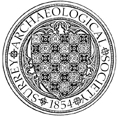Excavation by D W Williams for SyAS in advance of mineral extraction revealed two concentrations of activity. One was a concentration of pits, three of which contained Late Neolithic grooved ware and, palaeo-environmental assessment revealed, hazelnut shells; one of these pits also contained over 30 flint scrapers. Other pits were packed with charcoal and cremated bone, and one contained a Bronze Age spiral ring. The surrounding areas produced a variety of flints from Late Mesolithic through to Middle Bronze Age date, and sherds of decorated Peterborough type bowls from the Neolithic.


